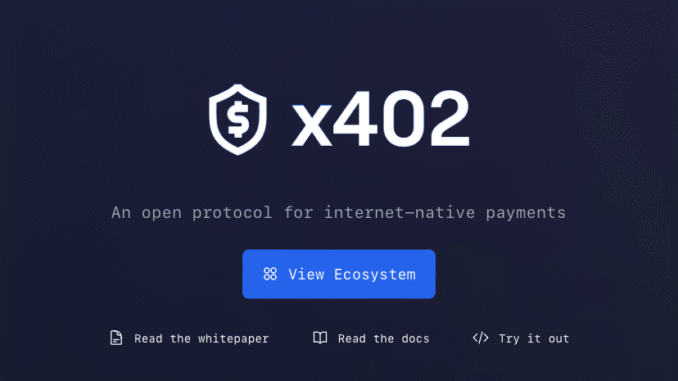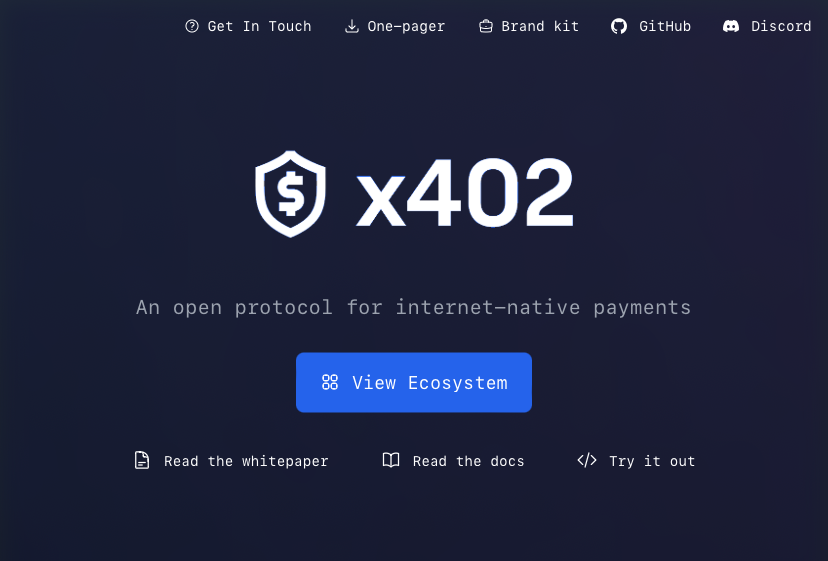
A recent discussion by analyst 0xJeff has brought x402, the standard of microtransactions payments, and Bittensor subnets into attention as a major element towards a $30 trillion future within the agentic economy.
This grand vision of a16z-funded prediction holds an agentic economy in which autonomous AI agents function on their own, working cooperatively and trading with each other, boosting productivity and top-line growth in sectors.
But can this decentralized fantasy conquer hype to deliver genuine value?
Understanding x402: The Payment Rails for an Agentic Economy
x402 is an open standard that’s disrupting online payments, leveraging the unused HTTP 402 status code to enable real-time, pay-as-you-go microtransactions.
As explained at x402.org, it allows developers to integrate crypto payments, including stablecoins, with minimal code, without traversing traditional billing systems and centralized middlemen. With its chain-agnostic approach, it is an all-around rail that’s suitable for an agentic economy where AI agents need to be able to exchange value freely.

The environment supporting x402 is evolving rapidly
Platforms like Nevermined_ai are constructing a billing infrastructure akin to “PayPal for AI,” while virtuals_io constructs agent registries and reputation systems. Ethereum provides a trust layer through ERC-8004, while EigenAI delivers verifiable AI inference to avoid hallucinations.
These pieces all come together as the basis for a pay-per-use, per-result, or per-second economy, addressing issues like work tracking, cost estimation, and instant settlement.
But now the market is largely dependent on speculative hype, with the majority of crypto AI agents serving no practical purpose in the real world, only niche applications like launchpads generate substantial revenues (6-8 figures ARR). This leaves the space for true use cases, where Bittensor subnets would thrive.
Bittensor Subnets: A Decentralized AI Powerhouse
Bittensor is a decentralized AI “mining” network where AI miners compete to offer valuable services, all compiled into subnets specialized in different tasks.
These subnets perform tasks of different kinds, prediction markets, coding assistance, data processing, and so forth, compensated by the TAO token, with emissions distributed proportionally according to performance per taostats.io.
This model suggests scalability, as early adopters such as SynthdataCo and SN13 already incorporate x402 to offer real-time social data APIs, confirming the viability of the idea.
The potential applications are promising
Imagine receiving a 30% return on investment with premium miner prediction signals in sports markets on Polymarket or Kalshi, charged per use. Or having cheap compute for open-source AI models, quicker than centralized software like Cursor or Replit.
Subnets also provide proprietary datasets, sports highlights, weather forecasts for commodity trading, or business intelligence to stay ahead of the pack. Though taostats.io statistics reveal emission dispersal among subnets, current token traction is limited, and the network’s complexity acts as a barrier to mass adoption.
However, this decentralized marketplace for artificial intelligence holds promise in igniting productivity in the agentic economy.
The Synergy: x402 + Bittensor Subnets
x402’s pay-per-use model is symbiotic with Bittensor’s performance-based incentives, enabling seamless exchanges of high-value services. For example, a company might pay a subnet for AI-driven lead generation, while a retail trader subscribes to market signals and pays immediately with stablecoins.
The a16z $30T TAM estimate points to this potential, with orchestrators (front-end interfaces) and domain-specific agents creating the most value.
Bittensor subnets are best understood as domain-specific providers, offering unique services that centrally-run AI cannot easily replicate due to data silos or hardware constraints. A subnet offering weather data might help farmers maximize crop yield or traders make money on energy futures, outcomes deserving of microtransactions.




Be the first to comment